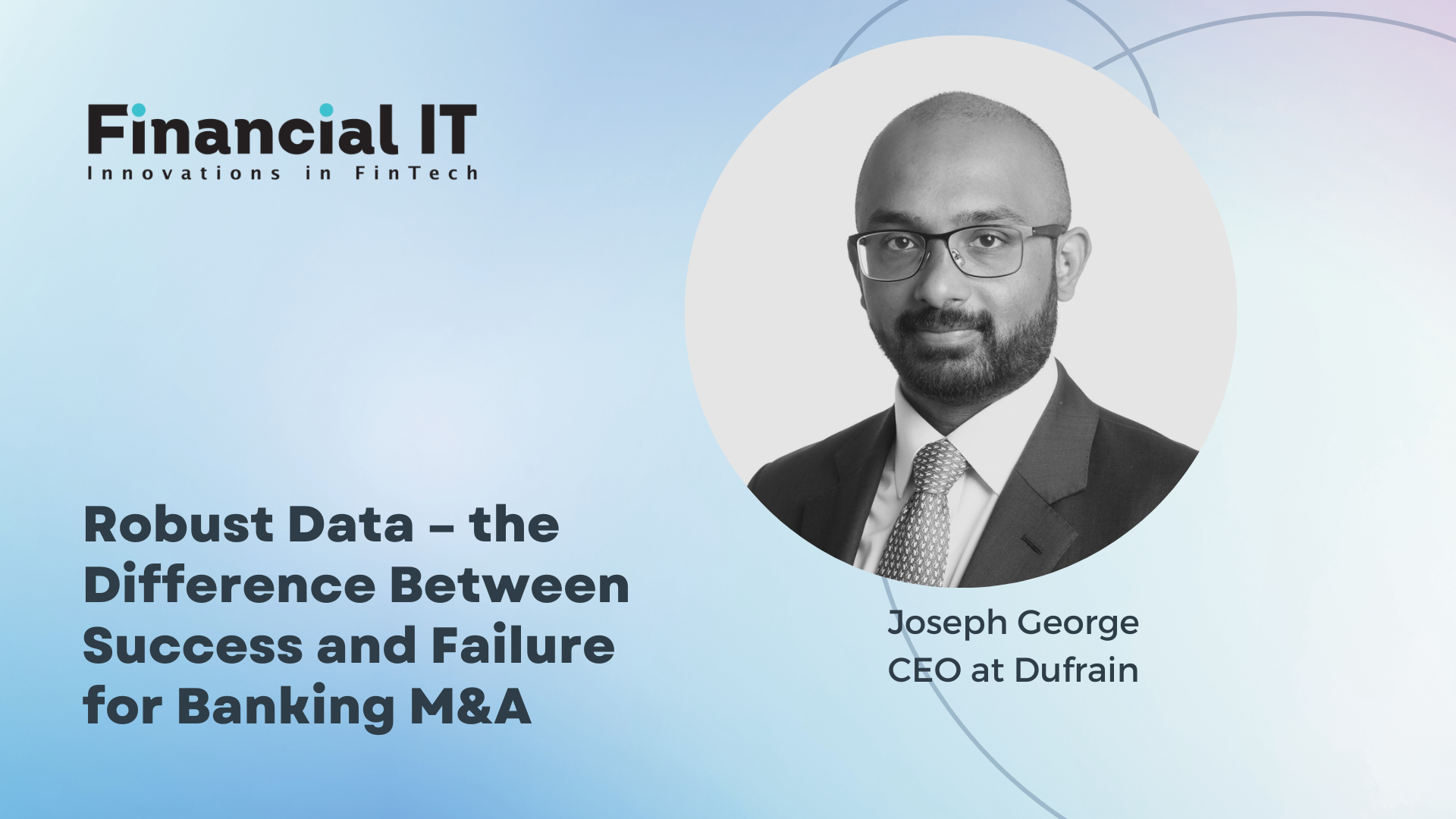Robust Data – the Difference Between Success and Failure for Banking M&A

- Joseph George, CEO at Dufrain
- 23.08.2023 10:30 am #banking
Snapping up rivals has always been a fundamental part of business when it comes to growth, but the banking sector might not be getting the most out of a crucial weapon when it comes to dealmaking.
Scale is a compelling way for banks to manage the dual pressures of growth ambitions from stakeholders, not to mention the increasing burden of compliance with more and more regulations. The most recent of these, for example, is Consumer Duty, which has received no shortage of attention and it will require the financial services industry to provide evidence of compliant personal data management practices.
Within the parameters of compliance, any merger or acquisition needs data, and good data at that, if it’s to be successful. There would be little point, for example, in Sainsbury’s Bank buying Co-op’s mortgage book if poor data maintenance meant it had too many holes or gaps and prevented the acquirer from making the most of the 3,500 new customers it just onboarded. Not only that, but the cross and upsell opportunities that become possible through such a rapid scale-up could easily go to waste if it’s not possible to see at a glance who has what product and what else they might need.
That said, many business leaders might not be fully harnessing data to its full potential, both when it comes to identifying and expediting the best deals and making them work. This is a rising concern, especially given more than half of total banking M&A in 2022 involved deals valued at greater than $5 billion, compared to just a quarter throughout the previous decade, according to Bain & Company.
With greater sums of money changing hands, the stakes have risen exponentially when it comes to successfully executing M&A deals, making the use of data even more important. But our research shows that the capability, skill, and even willingness surrounding data utilisation is lacking, not through any fault of their own, but through a lack of awareness of what good data actually looks like.
Resistant to change
In Dufrain’s State of Data and Analytics 2023 report, just 14% of banking respondents thought their data processes were fully mature, something which would allow them to get the most out of the information at their disposal.
With the success of any takeover hinging on reliable data from a due diligence perspective and, in the long-term, a customer service one too, executive teams need to know that they have robust data analysis skills within their organisations as well as the internal expertise to ensure no valuable material has been excluded.
And it’s not just exclusion of data that matters. Leaders need to make sure duplicated material is identified and removed allowing for data to be correctly identified and organised from the start. This sets the standard for rigorous maintenance of all records too.
Beyond data that is notionally organised though, such as profit and loss data or customer numbers, unstructured data, such as emails, PDFs, and other documents saved within various systems and tools, often proves more challenging to collate, analyse, and understand without the right framework in place.
Strategies required
This unstructured data is often the real treasure trove that needs investigating, but ensuring it has been comprehensively harvested from an organisation can be exceptionally challenging.
Regardless, without it, potential M&A opportunities could be missed, and unfavourable ones could be pursued. If not properly managed, unstructured data can also hinder project goals and present a compliance risk to banks in terms of statutory and financial penalties resulting from breaches or unintentionally inaccurate data disclosures. Essentially, banks need to establish a clear outcome-led strategy to better identify and utilise data for growth and to secure a competitive advantage.
Without implementing and prioritising the right data management tools and managing them effectively, leaders are unlikely to yield the benefits of their data, regardless of how much of it they have. It may mean that many institutions continue to make pivotal decisions based on sub-standard information.
This should be plenty to convince leaders that getting data right is a vital step to effective and profitable management. That said, our research also shows that more than a third (34%) of banking leaders think the biggest challenge in addressing data shortcomings was a reluctance to change. Clearly we need to tackle this head-on if we are to combat the pressure being put on executives to get M&A right at speed, something which is only increasing as proven by HSBC’s hasty purchase of Silicon Valley Bank’s UK-based business and UBS’s rescue of Credit Suisse.
All of these factors mean banks can’t wait any longer to get their data policies, skills, frameworks, and strategies in place to help them navigate the increasingly tumultuous landscape that the sector is routinely facing. A robust approach to structured data is a solid and commendable first step, it’s imperative that executives leverage advanced technology and reliable experience to support their teams in unlocking the information potentially hiding away in unstructured data. There are tools such as Control Tower that help do just that, while others (like Flight Path) are there to to speed up the data migration without sacrificing quality.
The promise of data is vast, but without an ability to determine the value within it, corporate leaders could find themselves conducting ineffective analysis of opportunities or even missing them altogether.
























